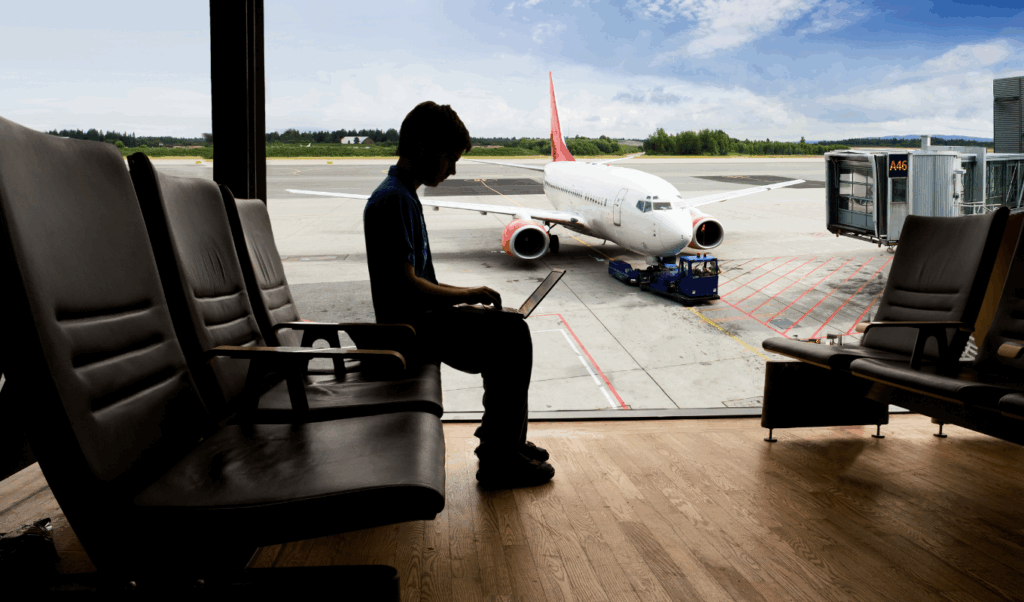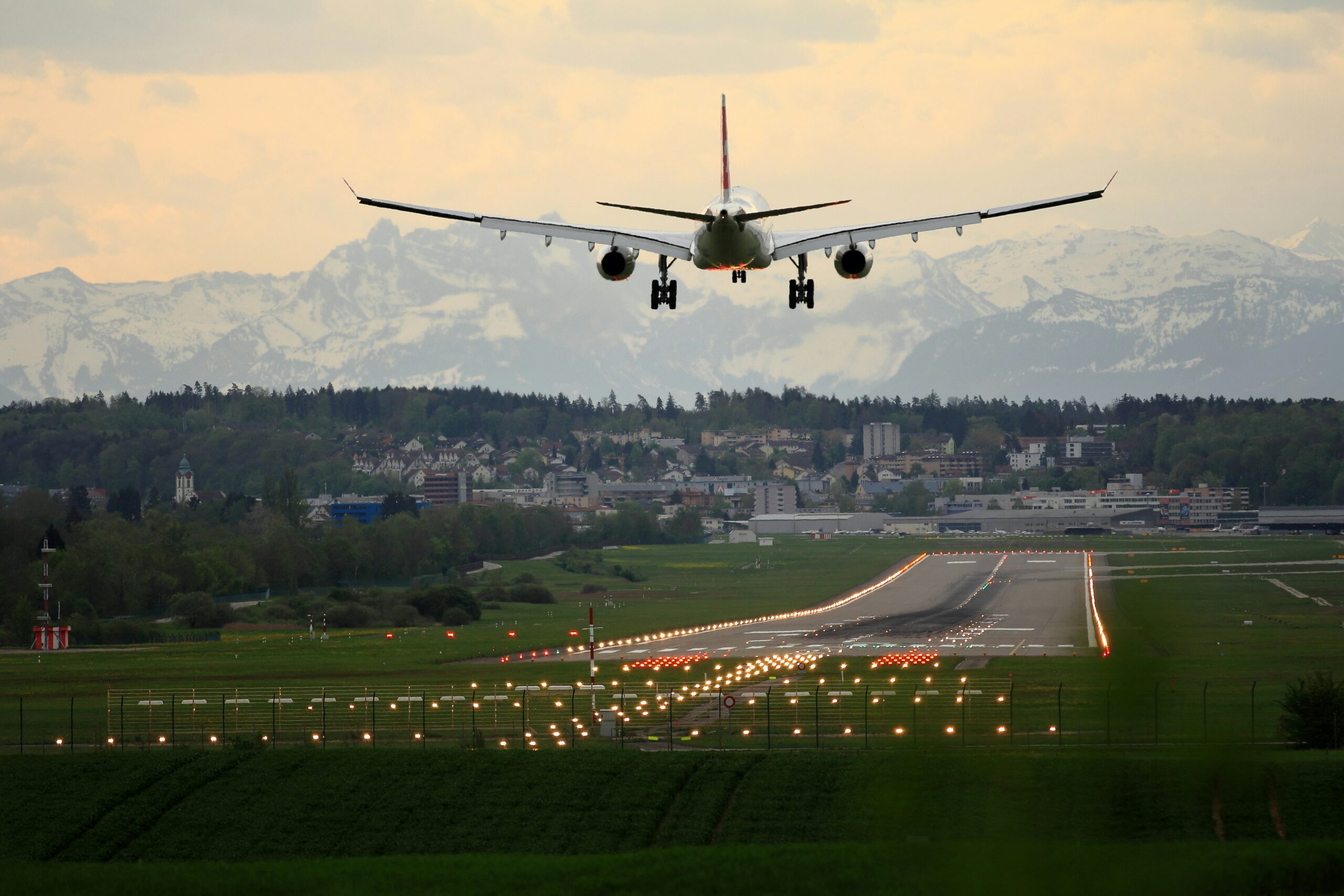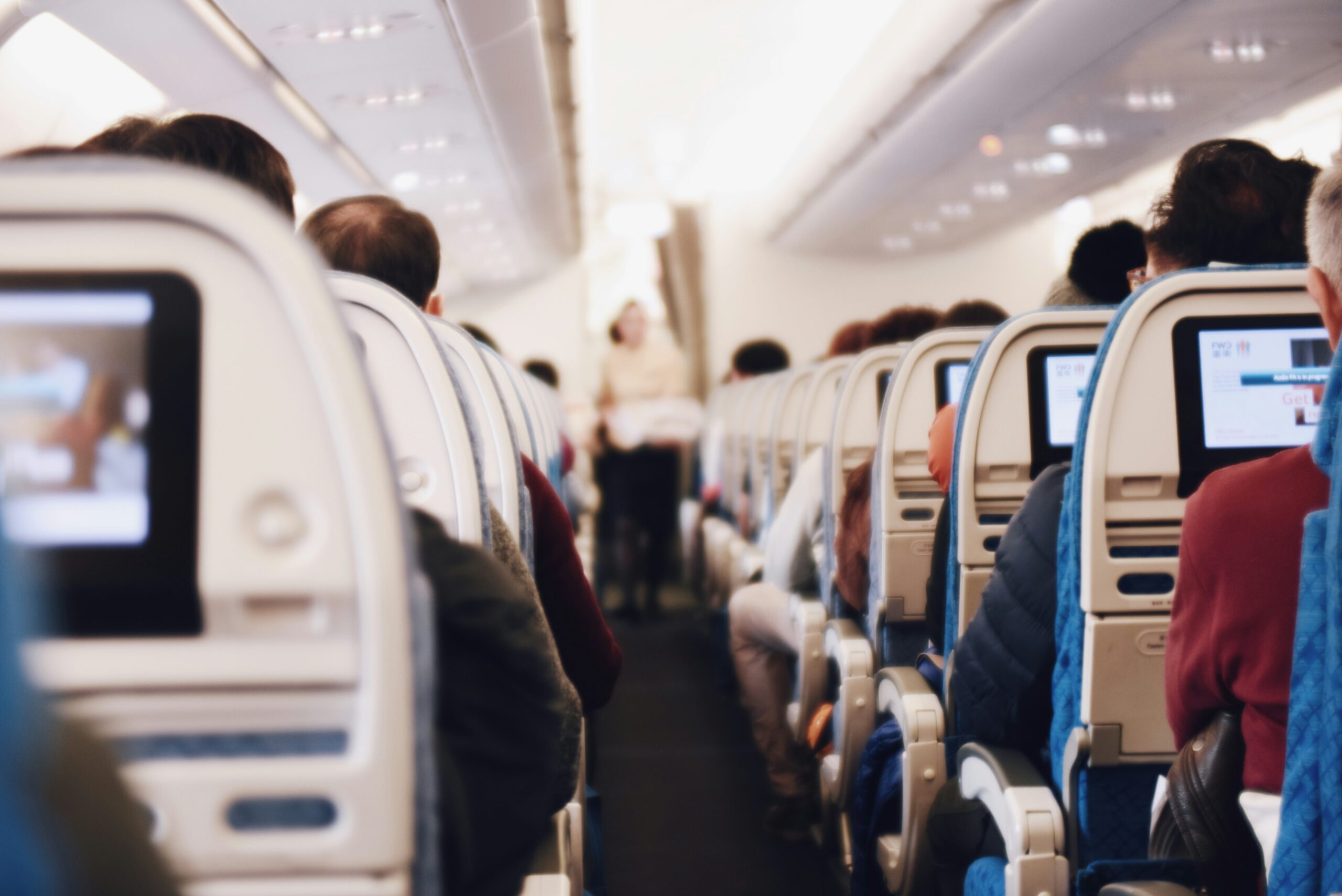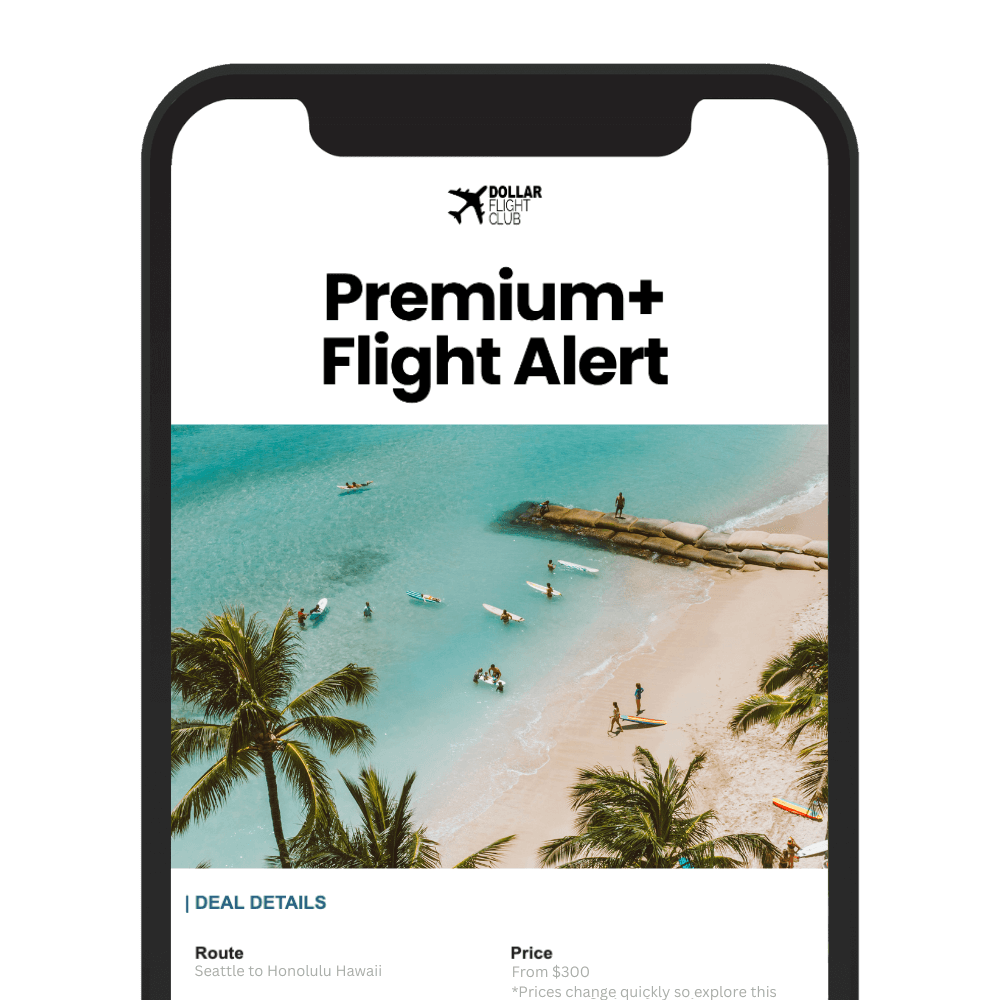Flight prices can change multiple times a day, and understanding why can save you money. Airlines use complex algorithms to adjust fares based on demand, seat availability, booking trends, and external factors like fuel costs or major events. Here’s how you can take advantage of this system:
- Timing Matters: Book domestic flights a few weeks ahead and international flights months in advance. Avoid last-minute bookings unless you’re chasing flash sales or mistake fares.
- Be Flexible: Travel midweek, choose alternate airports, and consider shoulder seasons for cheaper fares.
- Use Tools: Set up price alerts and tracking tools to monitor fare drops and act fast when deals appear.
- Watch for Events: Prices spike during holidays, big events, and on routes with little competition.
How Airlines Set Flight Prices
Airlines use a dynamic pricing strategy, meaning ticket prices are constantly adjusted based on demand and available inventory. Instead of sticking to fixed rates, airlines rely on advanced software systems that automatically update fares as booking conditions evolve. These systems are the backbone of real-time price changes.
Dynamic Pricing and Algorithms
Dynamic pricing algorithms take into account a variety of data points, such as current booking trends, historical travel behaviors, competitor pricing, and seasonal factors. For instance, if a particular flight starts filling up faster than expected, the system might push ticket prices higher. On the flip side, slower sales could lead to price drops. This approach ensures that ticket prices reflect real-time demand.
Timing plays a big role as well. Business travelers, who often book at the last minute, typically encounter higher fares compared to leisure travelers who plan and book well ahead. Predictive modeling also comes into play, analyzing peak booking periods, the impact of major events, and seasonal travel patterns to anticipate future demand.
Fare Buckets and Booking Classes
Airlines divide seats on a flight into different fare buckets, or price tiers, each with its own price and set of conditions. As the lower-priced buckets sell out, travelers are left with higher-priced options, which can lead to noticeable price jumps. These fare buckets are linked to booking class codes (like Y, B, M, or Q), which determine both the ticket price and any restrictions tied to it.
This setup explains why flights may still have seats available even when the cheapest fares are no longer offered. By managing the allocation of seats across these fare buckets, airlines create a sense of urgency, encouraging travelers to book earlier to secure lower prices.
External Factors That Affect Prices
While algorithms handle much of the pricing, external factors also play a significant role in fare fluctuations. For example, fuel costs are a major expense for airlines. When oil prices rise sharply, carriers often respond by adding fuel surcharges or increasing base fares to cover these added costs.
Competition on specific routes also impacts pricing. When low-cost carriers enter a route, established airlines may lower their fares to stay competitive. Conversely, routes with little to no competition often see higher ticket prices. Other external influences include airport slot availability, landing fees, seasonal travel demand, and broader economic conditions, all of which contribute to the ever-changing nature of airline pricing.

Why Flight Prices Change: Main Reasons
Understanding why flight prices go up and down can help you better plan your trips and snag the best deals. Airlines rely on complex algorithms to set their fares, but the reasons behind these changes often follow patterns that savvy travelers can learn to anticipate.
Seasons and Peak Travel Times
Holidays and busy travel periods are notorious for driving up demand – and ticket prices. For instance, domestic flights during Thanksgiving week often see some of the year’s highest prices. Christmas and New Year’s travel follow a similar trend, with fares typically spiking from mid-December through early January.
Summer vacations also bring higher prices, especially for international routes to Europe or popular beach destinations. These months tend to be more expensive compared to quieter “shoulder seasons” like late fall or early spring. Similarly, spring break in March often leads to price hikes for flights to sunny spots like Florida, Mexico, and the Caribbean.
Weekend travel is another factor. Flights on Fridays and Sundays usually cost more than midweek options like Tuesdays or Wednesdays, since these days are popular with both business and leisure travelers. Interestingly, some airlines historically released deals on Tuesday afternoons, but with modern pricing algorithms, fare adjustments now happen more frequently and unpredictably.
When You Book Your Flight
Timing your booking can make a big difference in how much you pay. For domestic trips, booking a few weeks ahead often strikes a good balance between early-bird discounts and avoiding last-minute price jumps. For international travel, booking even further in advance can lead to better deals.
Last-minute bookings are typically more expensive, as they cater to travelers who need to fly urgently and are less sensitive to price. On the flip side, flash sales and error fares can offer huge savings if you’re flexible and act quickly – these deals don’t last long and require fast decision-making.
External events and market trends also play a role. Airlines adjust fares based on factors like fuel costs, demand shifts, or even sudden changes in competition.
Special Events and Competitor Actions
Big events in certain cities can lead to localized fare increases. For example, flights to Super Bowl host cities often skyrocket during game weekend. Similarly, music festivals like Coachella or South by Southwest can drive up prices for nearby airports.
Trade shows and conventions also influence fares. Cities like Las Vegas, Orlando, and Chicago often experience price hikes tied to major events. For example, CES in Las Vegas during January usually leads to higher travel costs.
Competition between airlines is another key factor. When a low-cost carrier enters a new market, other airlines may drop their prices to stay competitive. On the other hand, if airlines reduce service on a route, the remaining carriers often raise fares due to reduced competition.
Economic trends also shape airline pricing. During economic downturns, airlines may lower fares to encourage travel. Conversely, in booming economic times, increased demand from both business and leisure travelers can push prices higher.

How to Save Money on Flights
Now that you know why flight prices fluctuate, you can use that knowledge to your advantage. With a bit of planning and smart strategies, you can shave hundreds off your travel expenses. Here’s how to make the most of your booking choices.
Be Flexible with Travel Plans
Being flexible can make a big difference when it comes to airfare. Airlines often reward travelers willing to adjust their schedules with lower prices. For example, flying midweek instead of on weekends could save you anywhere from $50 to $200 per ticket on domestic flights. Similarly, early morning or late evening flights are usually cheaper than those at more convenient times of the day.
Another way to save is by considering alternate airports. If you’re flying to a major city, look at nearby airports. For instance, flying into Oakland instead of San Francisco or Midway instead of O’Hare in Chicago can result in significant savings.
Flexibility with your destination can also help. Instead of focusing solely on one city, like Paris, look for deals to other European destinations. Cities like Rome, Amsterdam, or Barcelona might offer similar experiences at a fraction of the cost, especially during sales. This approach works particularly well for vacations where the goal is exploration, not visiting a specific place.
Timing your trip for the shoulder season – those periods just before or after peak travel times – can also save you money. For instance, visiting Europe in late April or early October gives you pleasant weather without the summer crowds or sky-high prices. The same goes for Caribbean destinations, where late spring often brings great deals before hurricane season starts to affect travel demand.
This kind of flexibility pairs well with other strategies, like monitoring fares and acting quickly when prices drop.
Use Price Tracking and Alerts
Price tracking tools take the guesswork out of finding deals. Many airlines and travel websites let you set up alerts that notify you when fares drop for specific routes. You’ll get an email or text when there’s a price drop, so you can book before the deal vanishes.
To make the most of these tools, start tracking prices early – about 2-3 months before domestic trips and 4-6 months for international travel. This gives you a good sense of the usual price range for your route, making it easier to spot a bargain. Many price alert systems also allow you to monitor flexible date ranges or entire months, helping you identify the cheapest times to travel. Sometimes, shifting your trip by just a few days can lead to big savings.
Using multiple price alert platforms can also increase your chances of finding the best fares. Different systems may catch deals that others miss, and some specialize in certain regions or types of offers. Diversifying your alerts ensures you’re casting the widest net possible.
These tools prepare you to act quickly when the right deal comes along.
Take Advantage of Flash Sales and Mistake Fares
Flash sales are a goldmine for budget travelers. Airlines often launch these short-term sales – usually lasting 24 to 72 hours – to fill seats quickly or respond to competitors. These sales can offer discounts of 30-60% off regular prices. Though they’re often announced on Tuesday afternoons or Wednesday mornings, flash sales can pop up at any time.
Mistake fares, on the other hand, are some of the best deals you’ll find. These happen when airlines accidentally publish incorrect prices due to system glitches, currency conversion errors, or human mistakes. You might stumble upon a $200 round-trip ticket to Europe or a $400 flight to Asia. These deals don’t last long, so acting fast is key.
If you spot a mistake fare, book immediately and double-check the details later. Airlines sometimes honor these fares even after realizing the error, especially if many tickets have already been sold. However, there’s no guarantee they’ll do so, so only book if you’re okay with the possibility of the reservation being canceled.
To move quickly when deals arise, have your passport details, credit card information, and preferred travel dates ready to go. The best flash sales and mistake fares often disappear within hours as they spread on social media and deal-sharing websites.
If you’re unsure about a deal’s legitimacy, consider booking a refundable fare. While these tickets cost more upfront, they offer flexibility and peace of mind if your plans change or the deal falls through.

How Dollar Flight Club Can Help You Save
Saving on flights doesn’t have to be a time-consuming process. Dollar Flight Club simplifies the search for discounted flights by curating the best deals and delivering them directly to your inbox and phone. Since its launch in 2016, the service has helped over 1 million members across more than 100 countries save over $50 million on flights to 500+ destinations. No endless scrolling or juggling multiple alerts – just straightforward savings.
What Dollar Flight Club Offers
Dollar Flight Club specializes in finding discounted flights and notifying members through email and SMS. These alerts often include deals you’d likely miss on your own, like mistake fares that disappear within hours or exclusive member-only sales. For instance, members have scored flights such as San Francisco to Hawaii for just $181 – a 73% discount off standard prices.
The service goes beyond just spotting deals. Members can track both domestic and international destinations, monitor multiple departure airports, and even prioritize specific dream locations. Premium members can track up to 4 departure airports and 10 dream destinations, making it easier to find deals tailored to their travel plans.
Membership Plans and Benefits
Dollar Flight Club offers three membership levels to suit different travel needs:
- Basic Plan: This free plan provides 1-3 deals per week, focusing on domestic economy flights from a single departure airport. While it’s a great starting point, the features are limited.
- Premium Plan: For $69 per year, Premium members unlock daily alerts for both domestic and international flights, covering up to 4 departure airports. They also gain access to mistake fares, exclusive member-only deals, and over $1,000 in savings through travel brand partnerships.
- Premium+ Membership: At $99 per year, Premium+ includes everything from the Premium plan, plus alerts for business and first-class deals, SMS notifications for time-sensitive offers, and tons of discounts on travel brands.
Why Dollar Flight Club is Worth It
Dollar Flight Club’s value is simple: if you book just one discounted flight a year that saves more than the membership fee, the service pays for itself. Many members report savings well beyond that.
Take real-life examples: In Spring 2018, a member saved $1,500-$2,700 on flights from Atlanta to Nairobi, booking a round-trip for $900 instead of the usual $1,400-$1,800. Another member found a round-trip flight from Chicago to Phoenix for just $38 – normally priced over $450.
“Using Dollar Flight Club, my fiancé and I saved over $400 each on our flights to Paris, when previously we were thinking we would not be able to go on a summer trip! We are so grateful and recommend DFC to everyone we know!” – Stephanie K.
Beyond just flights, Premium and Premium+ members enjoy perks worth over $1,000 through partnerships with top travel brands. These perks include discounts on hotels, car rentals, and travel gear, making the membership even more valuable.
The convenience factor is a game-changer. Instead of spending hours comparing prices across multiple websites or managing countless alerts, Dollar Flight Club delivers personalized notifications for the best deals. This way, you can focus on planning your trip while leaving the deal hunting to the experts.

Conclusion: Fly Smarter by Understanding Pricing
Grasping the ins and outs of airline pricing can give you a real edge when it comes to finding better deals. Airlines use dynamic pricing strategies, which can make the process tricky but also open up opportunities for those who know how to navigate them.
Flexibility and timing are your secret weapons. Traveling during shoulder seasons often means enjoying pleasant weather and lower fares. Combine this with strategic timing, and you’re already ahead of the game.
Technology can take the heavy lifting off your plate. Instead of manually checking prices endlessly, tools like Dollar Flight Club can monitor countless routes for you, sending alerts when worthwhile deals pop up. It’s like having a personal deal-hunting assistant.
But remember, these deals don’t last long. Mistake fares, flash sales, and sudden inventory changes can create brief windows to snag incredible savings. Being ready with the right tools ensures you can act fast when these opportunities arise.
The best approach? Stay patient but prepared. Keep an eye on prices for your planned trips while staying open to unexpected deals that might spark an impromptu getaway. The biggest savings often go to those who are quick to seize the moment.
FAQs
When is the best time to book a flight to get the lowest price?
When it comes to domestic flights, timing is everything. The best window to snag the lowest fares usually falls between 23 and 51 days before your trip, with the sweet spot landing at about 38 days prior to departure. For international travel, the timeline shifts – you’ll want to book 50 to 90 days in advance. However, for certain destinations, locking in your tickets 6 to 8 months ahead can often lead to the best savings.
If you’re flexible with your travel dates, consider flying on Tuesdays or Wednesdays. These midweek days typically have lower demand, which often means cheaper ticket prices. Booking early within these recommended timeframes can significantly boost your chances of finding a great deal.
What are the advantages of using price tracking tools to find cheaper flights?
Price tracking tools simplify the hunt for lower airfare by keeping an eye on fare changes and alerting you when prices go down. This means you can snag the best deals without the hassle of manually checking prices every day.
Many of these tools also offer insights into pricing patterns, helping you make informed decisions and steer clear of overpaying for your ticket. They take the guesswork out of timing your purchase, making it easier to plan budget-friendly trips with minimal effort.
What causes flight prices to change, and how do factors like fuel costs and major events play a role?
Flight prices are anything but steady, often shifting due to factors beyond the airlines’ control, like fuel costs and major global events. When fuel prices climb, airlines face higher operating costs, which can push ticket prices up – especially for long-haul flights where fuel accounts for a big chunk of expenses. Conversely, when fuel prices fall, fares might drop too, though airlines don’t always pass those savings on right away.
Big events like economic downturns, natural disasters, or geopolitical tensions can also shake up the balance of supply and demand, leading to unpredictable changes in ticket prices. Because of this volatility, staying informed on trends can give you a better chance to snag a good deal.










